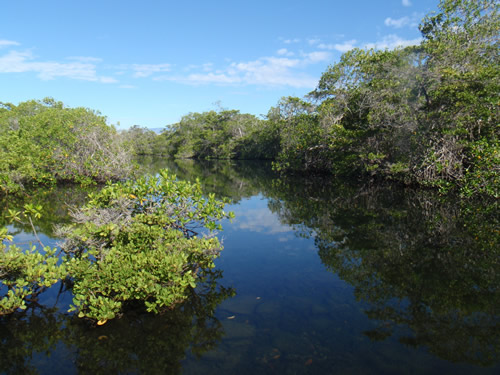Know the enemy: lessons from the labs on Galapagos
It may be a little unfair to wage war on a fly. But for SOS grantee and IUCN Member, Charles Darwin Foundation (CDF), Philornis downsi, deserves it. This parasitic insect is in the unfortunate situation of being an invasive species – a relative newcomer to the Galapagos islands, and one whose own ecological niche is threatening the survival of endemic bird species. Particularly at risk are Darwin’s famed finches – especially the Critically Endangered mangrove finch (Camarhynchus heliobates).
According to CDF, invasive species are the single biggest threat to Galapagos biodiversity. And Philornis is one of the worst offenders. Laying its eggs in the nests of birds its larvae hatch at the same time as the chicks, feeding on baby birds, and often accounting for 100% nest mortality. In the case of the Mangrove Finch, with a population of less than 100 individuals, the entire species is perilously close to extinction. Urgent action is required and ground-breaking science will provide the solution.
In tandem with recent successful efforts using “captive breeding” to release hand-reared adult finches into the mangroves, boosting wild populations, CDF and other collaborators are also working on control methods to counter the threat of Philornis. There are several options including: biological control using natural enemies, manipulating fly behaviour with pheromones, and introducing sterile males. This video describes and illustrates this important work in an engaging way but also underlines how complex wildlife conservation can be. To help protect the Galapagos’ finches, including the mangrove finch, conservationists must also understand the entire life cycle of this invasive fly species before a strategy can be devised to eliminate the threat posed by Philornis.
Wildlife conservation relies on people working together, bringing resources and energies together to solve complex issues over periods of time, often years. Thus sustained support for people working on the frontline is critical and of course communication is key to connecting supporters with those working in the field all focused on one common goal – a richer more diverse natural world.
So we hope this video brings you that little bit closer to understanding the efforts going in to save the Galapagos’ unique bird species from extinction.







